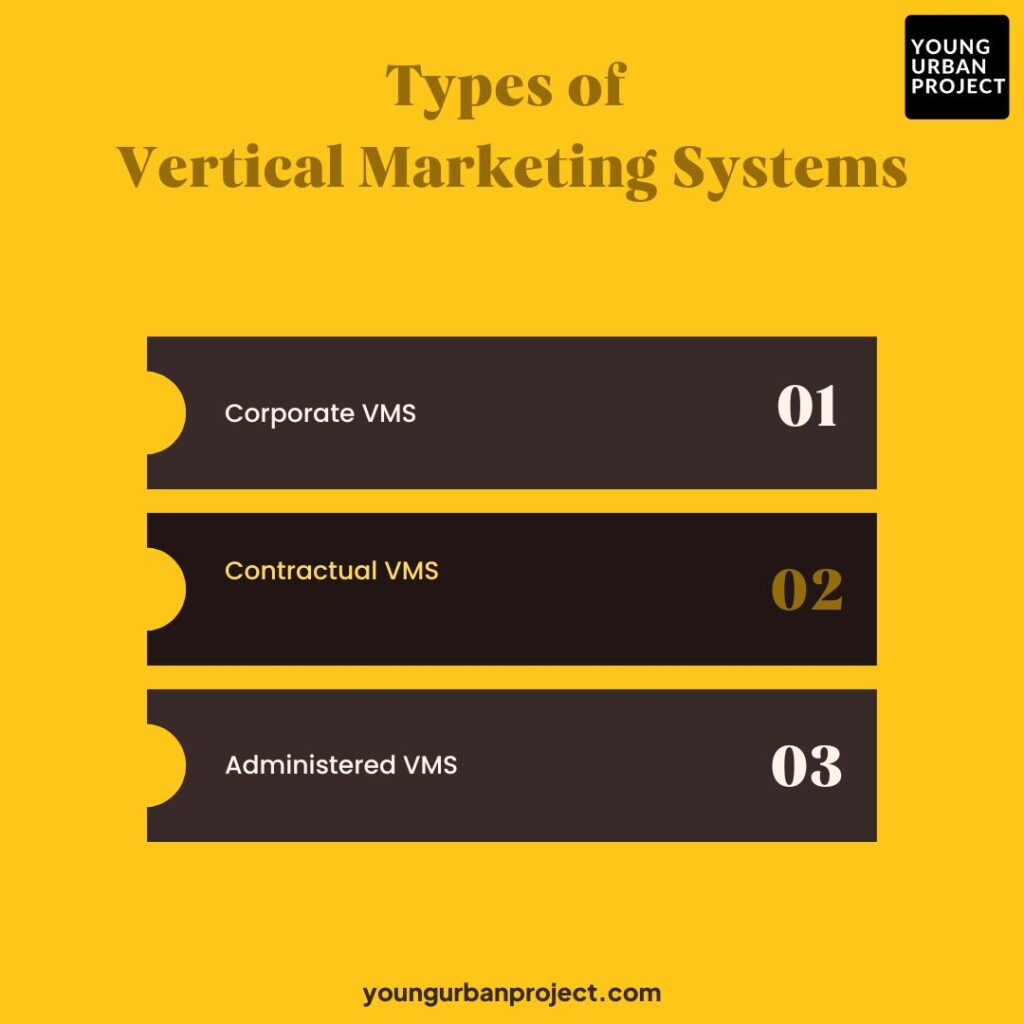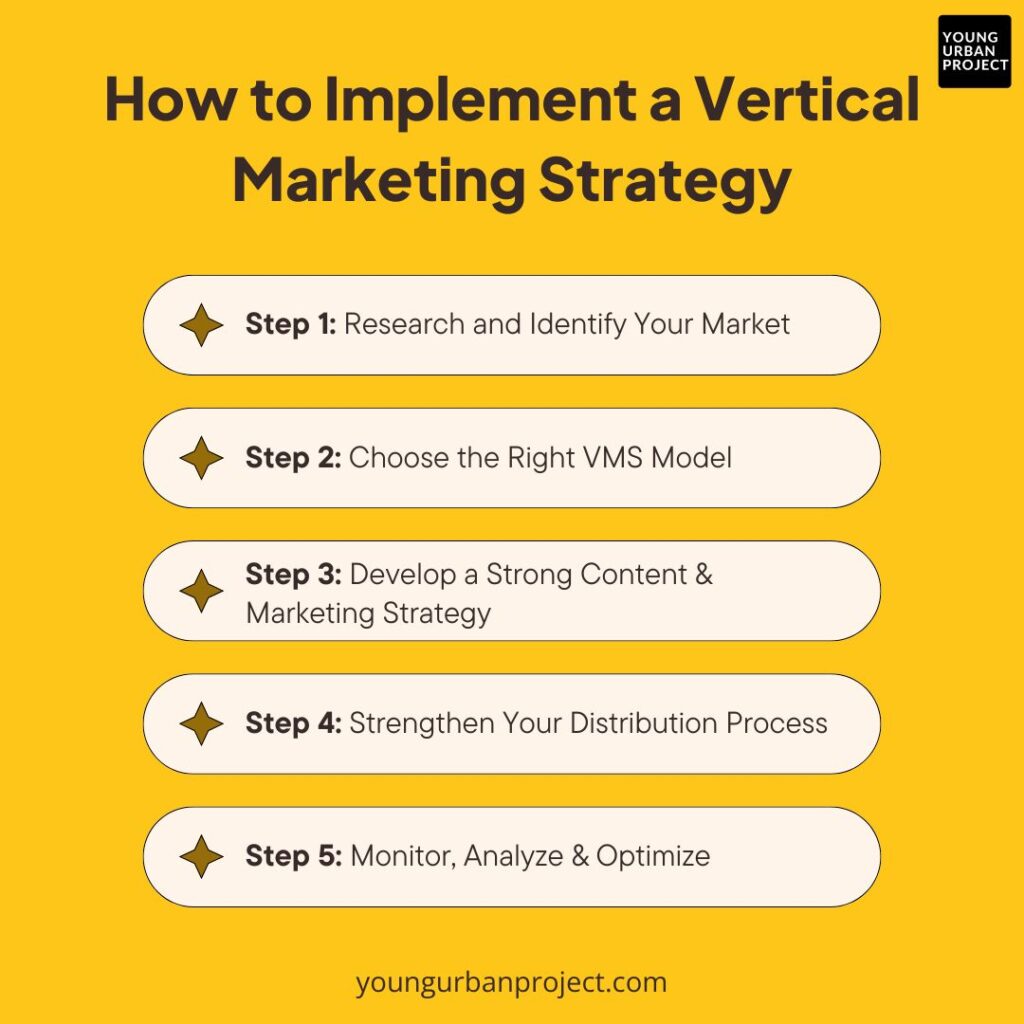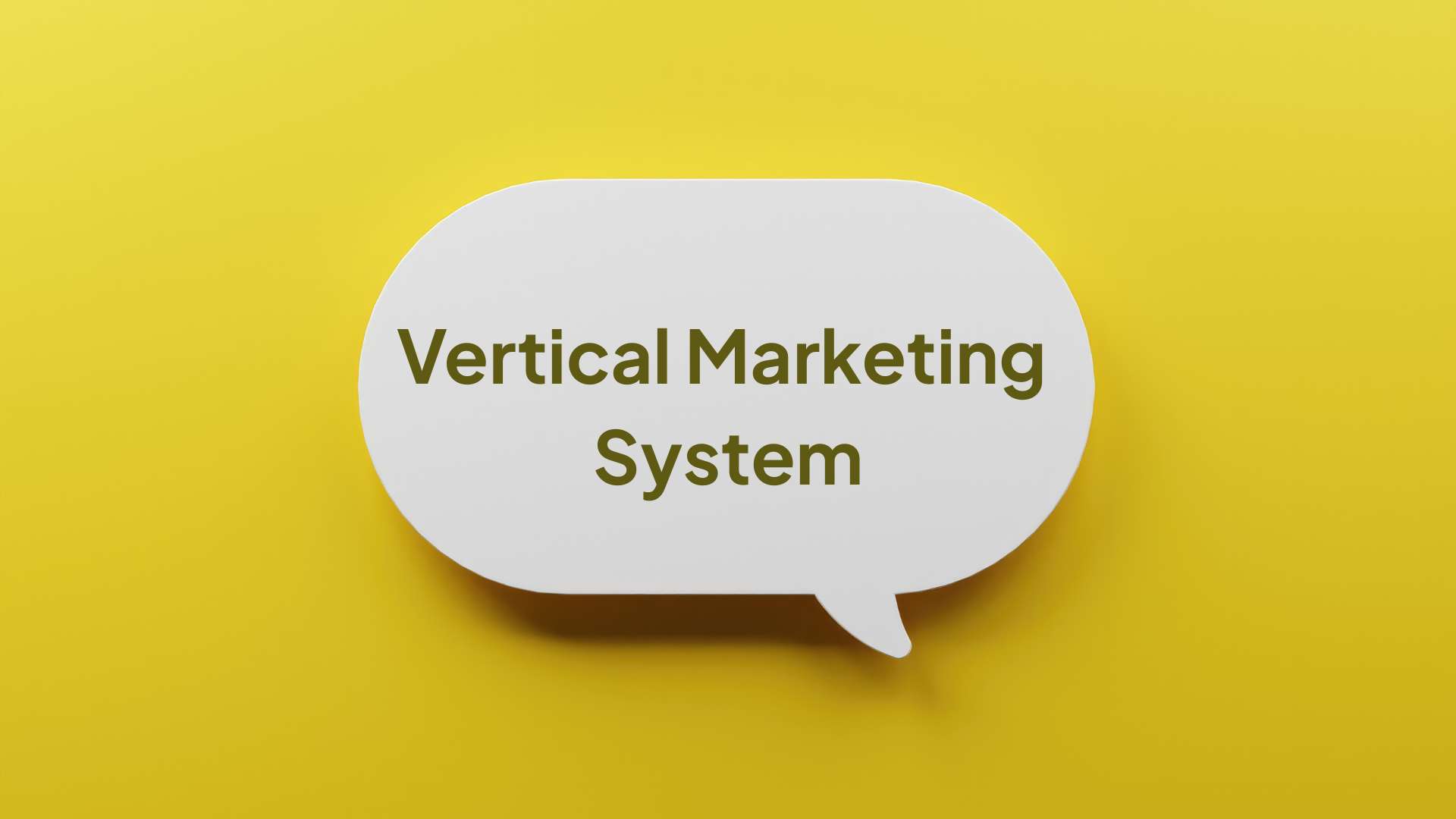For business owners and marketing managers, a cohesive and efficient marketing approach isn’t just a “nice-to-have”—it’s essential. Traditional marketing strategies often focus on horizontal collaborations or loosely connected partnerships, but for many, the key to success lies in streamlining operations and working in unity. This is where Vertical Marketing Systems (VMS) provide a game-changing advantage.
Table of Contents
This blog will guide you through what a vertical marketing system is, the different types, benefits, challenges, implementation steps, and real-world examples. You’ll leave with everything you need to know about whether a VMS is the right fit for your business.
What Is a Vertical Marketing System?
A Vertical Marketing System (VMS) is a streamlined approach where producers, wholesalers, and retailers within a supply chain work as a unified team. Instead of operating as separate entities, each part collaborates closely to ensure the efficient production, distribution, and sale of products or services.
How Does VMS Differ From a Traditional Marketing System?
- Integration vs. Independence: Traditional systems operate with independent entities, while VMS integrates them for a seamless flow of goods and services.
- Decision-Making Power: VMS often places decision-making authority within a single segment of the system, creating a centralized leadership model.
- Coordination: Traditional systems tend to have weaker coordination, whereas VMS focuses on a unified strategic direction.
Why Are Businesses Shifting to VMS?
Businesses are increasingly moving toward VMS because:
- They offer greater control over the supply chain.
- They ensure consistent branding and messaging.
- They enhance supply chain efficiency and reduce costs.
Types of Vertical Marketing Systems
There are three main types of VMS, each focusing on a distinct model of collaboration:

1. Corporate VMS
Corporate VMS consolidates all elements of the supply chain under a single company’s ownership. This structure allows the business to control everything—from manufacturing to retail distribution.
How It Works: The company directly manages production, wholesale, and retail.
Examples:
- Apple owns and operates its stores, controlling everything from hardware manufacturing to the retail experience.
- Tesla follows a similar model with direct-to-consumer sales through its exclusive stores.
2. Contractual VMS
Contractual VMS establishes legal agreements between entities at different levels of the supply chain. Unlike corporate VMS, ownership is not unified, but pre-established contracts ensure alignment.
How It Works:
- Includes franchising (e.g., McDonald’s), retail cooperatives (e.g., Ace Hardware), and wholesaler-sponsored voluntary chains (e.g., IGA).
Examples:
- McDonald’s works through franchise agreements to control its brand and ensure consistency worldwide.
- Dunkin’ uses similar franchising arrangements to deliver globally recognized donuts and coffee.
3. Administered VMS
Administered VMS doesn’t rely on ownership or contracts. Instead, a leading company within the supply chain exerts influence due to its size and market power.
How It Works:
- Dominant players (like retailers or manufacturers) drive decisions that affect other participants in the chain.
Examples:
- Walmart, as a retail giant, uses its purchasing power to deeply influence pricing, product availability, and supplier behavior.
- Procter & Gamble commands supplier influence through its extensive market reach.
Benefits of a Vertical Marketing System
A well-implemented VMS offers a range of benefits that can significantly improve business operations:
Improved Efficiency:
- Coordination within the supply chain ensures minimal waste and fewer delays.
- Resources are optimized, with fewer redundancies.
Cohesive Branding:
- Consistent messaging across products and services creates stronger recognition.
- Easily aligns with unified marketing strategies.
Stronger Collaborations:
- Encourages trust and better communication between manufacturers, wholesalers, and retailers.
- Reduces misunderstandings and promotes innovation.
Cost Savings:
- Streamlined logistics and shared resources lead to cost efficiency.
Challenges and Limitations of VMS
Every system has its drawbacks, and VMS is no exception. Here’s what you should consider:
Potential Power Struggles:
- Centralized control can lead to disagreements, especially in contractual or administered VMS.
Reduced Flexibility:
- Integrated systems may struggle to adapt to sudden market changes or disruptions.
Dependency Risks:
- Relying on one supply chain leaves businesses vulnerable to failures or bottlenecks within that system.
How to Implement a Vertical Marketing Strategy

Step 1: Research and Identify Your Market
Look at who your customers are and what they want. Check what your competitors are doing and notice industry changes. This helps you find gaps in the market that your business can fill. Knowing your market well shows you where your current system can improve.
Step 2: Choose the Right VMS Model
Pick the VMS type that works best for your business needs. Corporate VMS gives you total control over everything. Contractual VMS works through partnerships with clear agreements. Administered VMS is good for smaller businesses that can benefit from working with bigger companies.
Step 3: Develop a Strong Content & Marketing Strategy
Create clear and consistent messages about your brand. Use the same style and tone in all your marketing. Connect with customers both in person and online. This helps more people learn about your business and builds stronger relationships with them.
Step 4: Strengthen Your Distribution Process
Make your product delivery smoother and faster. Ensure everyone in your supply chain can talk to each other easily. Remove any steps that waste time or money. This helps products move from makers to customers without problems or delays.
Step 5: Monitor, Analyze & Optimize
Track how well your system is working using simple measurements. Check things like how fast products sell, if customers are happy, and if marketing brings results. Look at this information regularly and make small changes to fix problems. This helps your business keep improving.
Vertical vs. Horizontal Marketing Systems
Key Differences
| Feature | Vertical Marketing Systems | Horizontal Marketing Systems |
| Basic Structure | Companies at different levels of supply chain work together (producers, wholesalers, retailers) | Companies at the same level of supply chain work together (all retailers or all manufacturers) |
| Who Controls What | One company or group controls multiple steps in getting products to customers | Companies keep their independence but share some resources |
| Main Goal | Make the journey from factory to customer smoother and more efficient | Share costs and reach more customers without needing to grow alone |
| Decision Making | Decisions often come from the top down | Decisions are usually made together by partner companies |
| Product Flow | Products move within one system from making to selling | Products move between similar businesses to reach more places |
| Contracts | Often uses strict contracts or direct ownership | Usually uses looser partnerships and agreements |
Real-World Examples
| System Type | Examples | How It Works In Practice |
| Vertical | Apple | Makes its own products, runs its own stores, controls its software – everything stays “in the family” |
| McDonald’s | Controls franchises with strict rules about how stores look, what they sell, and how they operate | |
| Zara | Owns factories, designs clothes, and sells in their own stores to keep fast fashion moving quickly | |
| Horizontal | Star Alliance (airlines) | Different airlines work together so passengers can use one ticket across many companies |
| Independent Grocery Alliance | Small grocery stores team up to get better prices from suppliers and share advertising costs | |
| Best Western Hotels | Separate hotel owners join forces under one brand name while keeping their own properties |
When To Use Each System
| Business Need | Better System | Why It Works |
| Want total control over product quality | Vertical | You oversee every step from creation to customer |
| Need to enter new markets quickly | Horizontal | Partner with existing businesses instead of building from scratch |
| Focus on consistent customer experience | Vertical | Control all customer touchpoints for reliable service |
| Limited resources or funding | Horizontal | Share costs with partners instead of paying for everything alone |
| Complex products requiring specialized steps | Vertical | Ensure each production step meets exact standards |
| Seasonal business with changing demands | Horizontal | Share risk with partners during slow periods |
Real-Life Examples of Successful VMS Implementation
Corporate VMS: Apple

Apple shows us how a corporate VMS works in real life. They control everything from start to finish. They make their own products, create their own software, and sell through their own stores. This gives them complete control.
Why this works so well:
- Apple designs both hardware and software, so everything works together perfectly
- Their stores look the same and offer the same service everywhere
- They can keep their product secrets safe
- Customers get the same Apple experience no matter where they shop
Contractual VMS: McDonald’s

McDonald’s uses contracts to make their VMS work. They don’t own most McDonald’s restaurants – local business owners do. But these owners (franchisees) sign strict agreements to follow McDonald’s rules.
How McDonald’s makes this work:
- Every restaurant must use the same ingredients and cooking methods
- The buildings, uniforms, and packaging look the same worldwide
- Restaurant owners get training and marketing help from McDonald’s
- Customers can get the same Big Mac taste in Tokyo or Texas
Administered VMS: Walmart

Walmart shows how a big company can control a supply chain without owning it. They use their size and buying power to influence how suppliers operate.
What makes Walmart’s approach effective:
- They buy in such large amounts that suppliers must meet their demands
- They set rules about packaging, delivery times, and product specs
- They push suppliers to keep costs low to maintain “everyday low prices”
- Suppliers change their practices to keep Walmart’s business
- Customers benefit from consistent low prices and product availability
Is a Vertical Marketing System Right for You?
For businesses aiming to improve operational efficiency, build strong branding, and deliver seamless customer experiences, a Vertical Marketing System (VMS) is often the ideal solution. A VMS helps streamline the flow of goods and services from production to the end consumer, optimizing each stage of the supply chain. While challenges such as implementation complexities, potential power imbalances, or the need for significant coordination may arise, careful planning and regular review can help address these issues and unlock the full potential of the system.
If you’re ready to explore how a VMS can elevate your business, start by analyzing your current supply chain to identify inefficiencies or pain points. Then, research and choose a VMS model that aligns with your business needs and goals. Begin with small, manageable steps, and scale up as you see results, ensuring that the system grows alongside your business. With the right approach, a VMS can be a game-changer for your success.
Enroll Now: Live Advanced Digital Marketing Course
FAQs: Vertical Marketing System
1. What are the three types of Vertical Marketing Systems (VMS)?
A Vertical Marketing System (VMS) is when different businesses in a supply chain—like manufacturers, wholesalers, and retailers—work together instead of operating separately. This helps improve efficiency and avoid conflicts.
Here are the three main types:
– Corporate VMS – One company owns multiple stages of the supply chain.
– Contractual VMS – Independent businesses agree to work together through contracts.
– Administered VMS – A big, influential company sets the rules without direct ownership.
2. How does a VMS make businesses more efficient?
– It reduces friction between manufacturers, suppliers, and retailers since everyone is aligned.
– There’s better coordination, meaning products move smoothly from production to shelves.
– Companies save money by optimizing processes and buying in bulk.
– It helps businesses deliver faster, making customers happier.
– Brands maintain consistent pricing and quality, strengthening their reputation.
3. Can small businesses use a VMS?
Absolutely! Small businesses can benefit from a Contractual VMS by partnering with larger companies through franchising, supplier agreements, or cooperatives. This way, they can tap into established systems for marketing, logistics, and supply chain management without needing massive capital investment.
4. What’s a real-world example of a Contractual VMS?
Think of McDonald’s franchises. Individual business owners (franchisees) run McDonald’s restaurants, but they follow strict brand guidelines and benefit from corporate-level marketing and supply chains. This setup allows McDonald’s to scale while letting independent owners be part of a proven system.

